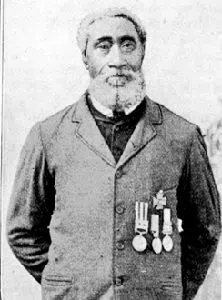William Hall was the son of formerly enslaved parents, Jacob and Lucy, a pair of Nova Scotian Settlers who fled Maryland during the war of 1812. Hall spent most of his upbringing following in his father’s footsteps working various shipyards until enlisting in the Royal Navy at 17 where he spent most of his life sailing to various ports providing ground assistance manning heavy gun batteries in various conflicts.
The captain of the HMS Shannon, William Peel, recommended Hall and fellow crew member Thomas Young for the Victoria Cross, in recognition of their “gallant conduct at a twenty-four-pounder gun” after they became the only two survivors of an at sea battle during the Siege of Lucknow in India.
Hall received his Victoria Cross aboard HMS Donegal in Queenstown Harbour, Ireland, on October 28, 1859. His naval career continued aboard many ships until he retired in 1876 as Quartermaster.
Being of African descent, Hall’s efforts went largely unnoticed until a visit from the Duke later known as King George V who noticed Hall’s medals, including the Victorian Cross, drawing attention to his service.
He was buried in an unmarked grave without military honours but that changed only a few years later thanks to the Canadian Legion who campaigned to have his body relocated to the Hantsport Baptist Church under a monument in his honour and now his name is recognized by a branch of the Canadian Legion, a Gymnasium, an education program for black students in Montreal, the connector road from Highway 101 to Trunk 1 and as of 2021, a Royal Canadian Navy Ship stationed right here in Halifax.
William Hall is the first Nova Scotian recipient, first recipient of African Descent and third overall Canadian recipient of the Victoria Cross.









